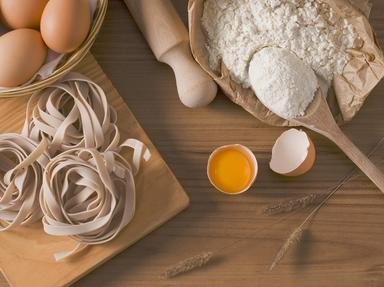Quiz Answer Key and Fun Facts
1. What is Francois Boullier credited with inventing back in the 1540s that has made the life of many a chef easier, especially when making Welsh rarebit or potato rosti?
2. No kitchen is complete without Irving Nachumsohn's invention, which was marketed in the 1950s as the Naxon Beanery. By what name do we know this invention today?
3. Which kitchen implement did William Lyman of Connecticut invent in 1870, which has since been improved on several times and is now available as an electric gadget?
4. Purified polyethylene slag can be found in just about every kitchen these days. Invented by Earl Tupper in 1942, by what name do we know this product?
5. Circa 1840, the practice of afternoon tea was created by the 7th Duchess of Bedford. Which item of kitchenware did she popularise during this time, originally to ensure the activity lasted longer?
6. George Foreman is well known for promoting the portable grill, known as the George Foreman grill. In addition to Foreman, who promoted the grill in Asia?
7. What did Eugene C. Sullivan invent in 1908 to assist the railway industry that would soon become a staple found in many kitchens?
8. Early examples of which kitchen utensil have been found in Southwest Asia that date back to approximately 35,000 BC?
9. Which kitchen appliance was invented by accident by Alan MacMasters and marketed unsuccessfully by Evelyn Compton in 1893, not taking off until 1926 when Waters-Genter unveiled a design that has hardly changed since?
10. The first commercially available microwave oven was made by Raytheon and sold in 1947. How tall was this first home appliance?
Source: Author
480154st
This quiz was reviewed by FunTrivia editor
jmorrow before going online.
Any errors found in FunTrivia content are routinely corrected through our feedback system.

